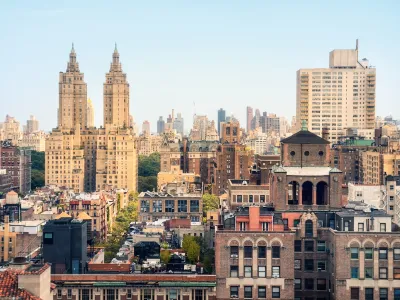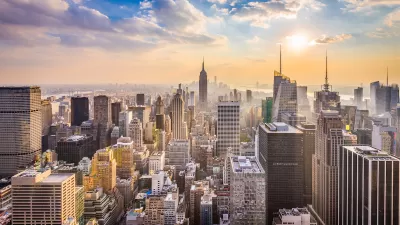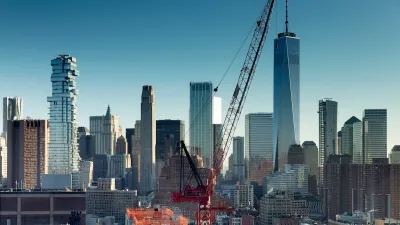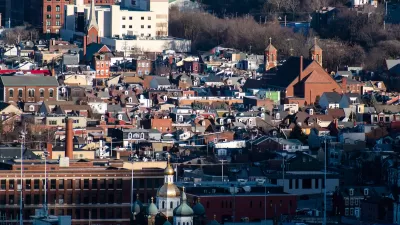The zoning reform package dubbed ‘City of Yes’ will likely yield uneven results, with many of the lowest-density neighborhoods exempted from new regulations.

An article in Bloomberg CityLab by Sarah Holder, Nacha Cattan, and Marie Patino outlines where new housing could be built in New York City under the recently adopted City of Yes zoning reform plan.
For the city’s landscape, it’ll mean mostly subtle changes — a few extra stories here, a granny flat there, or apartments carved from existing, undesirable office towers. In total, the city estimates about 80,000 new units will be built over the next 15 years.
Part of the plan tackles properties near transit stations, which will be allowed to add up to five stories in certain areas. Buildings with ground-floor retail will be able to add up to four stories of housing in commercial corridors. However, restrictions still apply in some of the city’s lowest-density neighborhoods, including parts of Riverdale in the Bronx and Floral Park in Queens.
City of Yes also permits accessory dwelling units — with restrictions in low-density, historic, and flood-prone areas. “Those kinds of limitations will steeply limit the amount of ADUs that can be built, according to the Regional Plan Association. It estimates under 20,000 ADUs will be built over the next 15 years, less than half of the amount envisioned by the original proposal, which didn’t have as many parameters.”
The new rules seek to make office conversion easier by allowing buildings built before 1991 to be converted, which the city expects will yield 20,000 new units of housing.
FULL STORY: Where New York City's Zoning Reform Will Add Housing

Study: Maui’s Plan to Convert Vacation Rentals to Long-Term Housing Could Cause Nearly $1 Billion Economic Loss
The plan would reduce visitor accommodation by 25,% resulting in 1,900 jobs lost.

North Texas Transit Leaders Tout Benefits of TOD for Growing Region
At a summit focused on transit-oriented development, policymakers discussed how North Texas’ expanded light rail system can serve as a tool for economic growth.

Why Should We Subsidize Public Transportation?
Many public transit agencies face financial stress due to rising costs, declining fare revenue, and declining subsidies. Transit advocates must provide a strong business case for increasing public transit funding.

How to Make US Trains Faster
Changes to boarding platforms and a switch to electric trains could improve U.S. passenger rail service without the added cost of high-speed rail.

Columbia’s Revitalized ‘Loop’ Is a Hub for Local Entrepreneurs
A focus on small businesses is helping a commercial corridor in Columbia, Missouri thrive.

Invasive Insect Threatens Minnesota’s Ash Forests
The Emerald Ash Borer is a rapidly spreading invasive pest threatening Minnesota’s ash trees, and homeowners are encouraged to plant diverse replacement species, avoid moving ash firewood, and monitor for signs of infestation.
Urban Design for Planners 1: Software Tools
This six-course series explores essential urban design concepts using open source software and equips planners with the tools they need to participate fully in the urban design process.
Planning for Universal Design
Learn the tools for implementing Universal Design in planning regulations.
Ascent Environmental
Borough of Carlisle
Institute for Housing and Urban Development Studies (IHS)
City of Grandview
Harvard GSD Executive Education
Toledo-Lucas County Plan Commissions
Salt Lake City
NYU Wagner Graduate School of Public Service





























